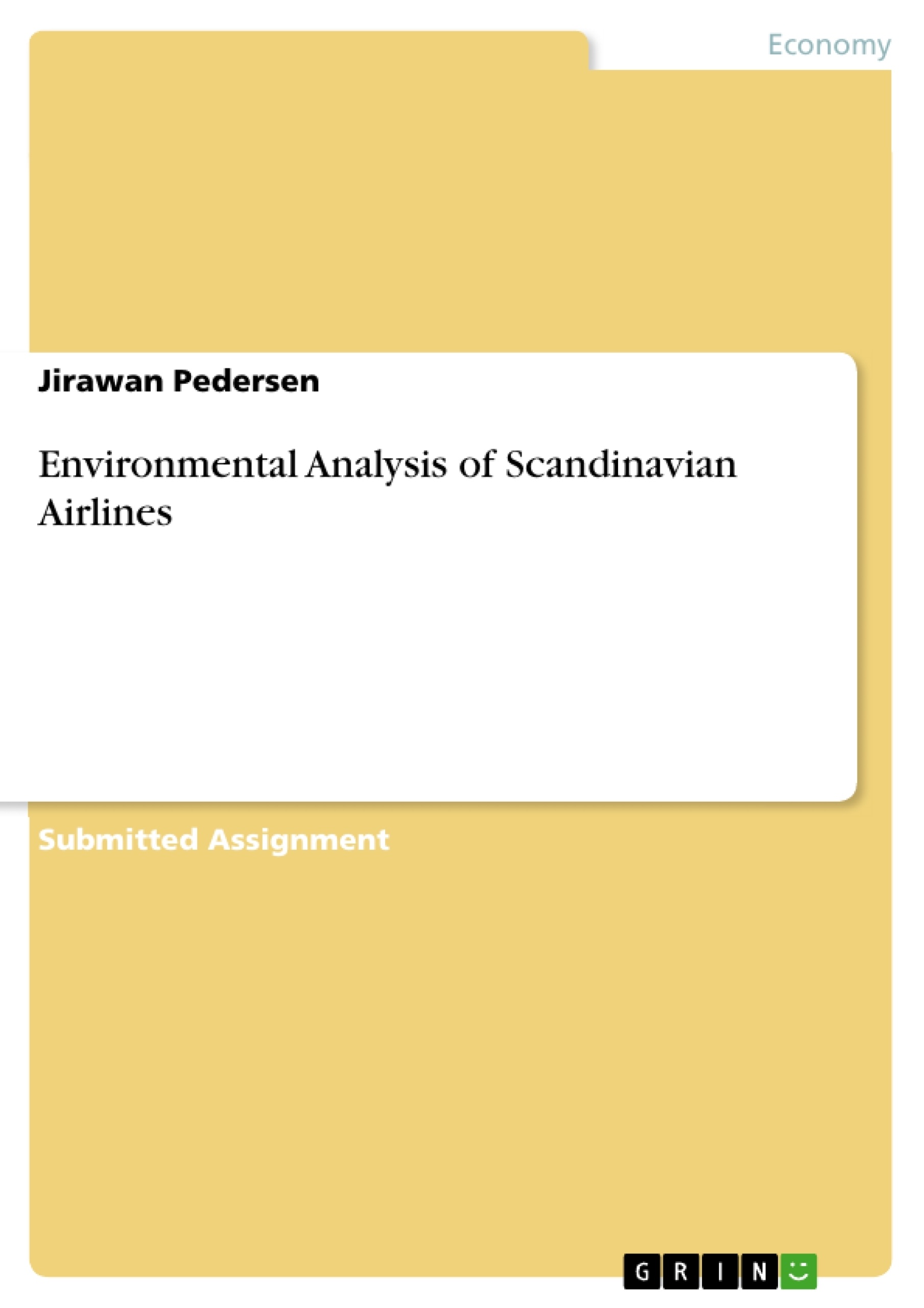We will focus on internal and external circumstances challenging Scandinavian Airlines, also known as SAS. In order to run international flights, SAS was established in 1946 as a partnership between the national airlines of Norway, Sweden, and Denmark. SAS was the first airline to operate a route from Copenhagen to Tokyo in Japan across the arctic pole. However, after a lengthy history of being a well-respected airline, SAS faced two years of losses in a row in 1981 and subsequent 15-day strike action in early July 2022.
Inhaltsverzeichnis (Table of Contents)
- Environmental analysis & importance of environmental analysis
- Relevant theories/models
- Brief overview of company
- SAS and the 1981 crisis
- SWOT analysis:
- STRENGTHS
- WEAKNESSES
- OPPORTUNITIES
- THREATS
- PESTLE analysis:
- POLITICAL
- ECONOMIC
- SOCIAL
- TECHNOLOGICAL
- ENVIRONMENTAL
- The strike action in July 2022
- SWOT & PESTLE analysis:
- STRENGHTS
- TECHNOLOGICAL
- POLITICAL, ECONOMIC & WEAKNESSES
- THREATS, & LEGAL, SOCIAL
- OPPORTUNITIES & ENVIRONMENTAL
Zielsetzung und Themenschwerpunkte (Objectives and Key Themes)
The text aims to provide a comprehensive environmental analysis of Scandinavian Airlines (SAS) by examining both internal and external factors that impact its performance. The analysis uses SWOT and PESTLE frameworks to identify the company's strengths, weaknesses, opportunities, threats, political, economic, social, technological, legal, and environmental factors.
- The impact of internal factors such as management decisions and organizational structure on SAS's performance.
- The influence of external factors such as political stability, economic conditions, and technological advancements on the airline industry.
- The challenges faced by SAS during the 1981 crisis, including financial difficulties and competition.
- The company's response to these challenges, including its pivot under Jan Carlzon's leadership.
- The role of the strike action in July 2022 in highlighting ongoing challenges for SAS.
Zusammenfassung der Kapitel (Chapter Summaries)
The text begins by defining environmental analysis and its significance for organizational performance, highlighting how it allows for identifying internal and external factors influencing a company's success. It then introduces two commonly used frameworks: SWOT and PESTLE, which are employed to understand the company's internal strengths and weaknesses and its external opportunities and threats. Following this, a brief overview of SAS is provided, outlining its history and its position in the aviation market. The analysis then delves into SAS's 1981 crisis, examining the company's internal strengths and weaknesses through the lens of the SWOT framework. This period is further analyzed by highlighting the opportunities and threats SAS faced. The text then moves on to a detailed PESTLE analysis, exploring the political, economic, social, technological, legal, and environmental factors that influence SAS's performance. The analysis considers the political stability of Scandinavia, the impact of the global crisis on the aviation industry, and the challenges posed by SAS's geographic location. Finally, the text examines the strike action in July 2022, highlighting how this event reflects the ongoing challenges faced by SAS. It also uses a SWOT and PESTLE analysis framework to understand the strengths, weaknesses, opportunities, and threats that contribute to these challenges.
Schlüsselwörter (Keywords)
The primary keywords and focus topics include: Scandinavian Airlines (SAS), environmental analysis, SWOT analysis, PESTLE analysis, aviation industry, crisis management, organizational structure, internal factors, external factors, political stability, economic conditions, technological advancements, labor unions, strike action, and sustainability. The text also explores concepts like service quality, profitability, and market competition within the context of the airline industry.
- Quote paper
- Jirawan Pedersen (Author), 2022, Environmental Analysis of Scandinavian Airlines, Munich, GRIN Verlag, https://www.grin.com/document/1297307



